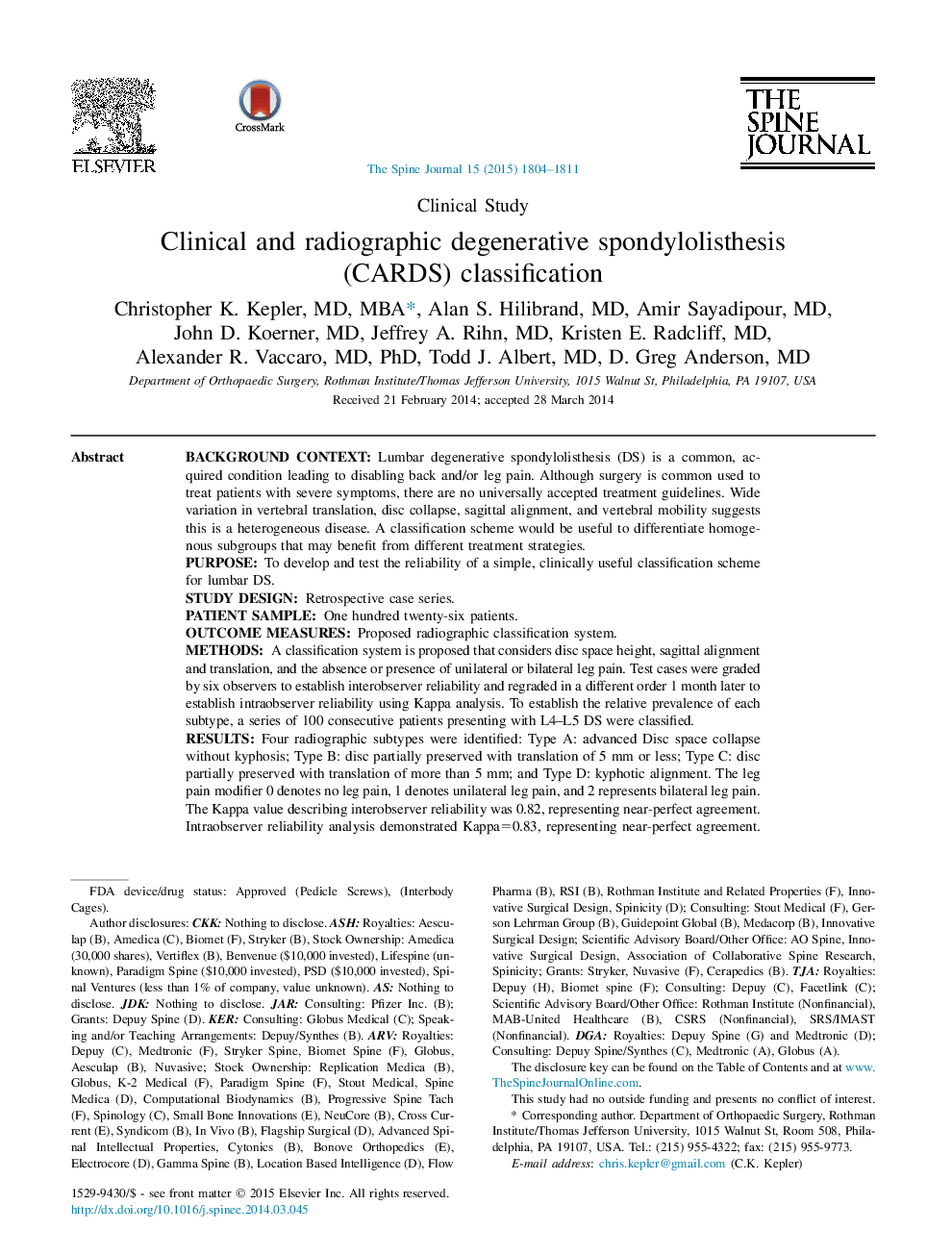| کد مقاله | کد نشریه | سال انتشار | مقاله انگلیسی | نسخه تمام متن |
|---|---|---|---|---|
| 6212463 | 1268580 | 2015 | 8 صفحه PDF | دانلود رایگان |

Background contextLumbar degenerative spondylolisthesis (DS) is a common, acquired condition leading to disabling back and/or leg pain. Although surgery is common used to treat patients with severe symptoms, there are no universally accepted treatment guidelines. Wide variation in vertebral translation, disc collapse, sagittal alignment, and vertebral mobility suggests this is a heterogeneous disease. A classification scheme would be useful to differentiate homogenous subgroups that may benefit from different treatment strategies.PurposeTo develop and test the reliability of a simple, clinically useful classification scheme for lumbar DS.Study designRetrospective case series.Patient sampleOne hundred twenty-six patients.Outcome measuresProposed radiographic classification system.MethodsA classification system is proposed that considers disc space height, sagittal alignment and translation, and the absence or presence of unilateral or bilateral leg pain. Test cases were graded by six observers to establish interobserver reliability and regraded in a different order 1 month later to establish intraobserver reliability using Kappa analysis. To establish the relative prevalence of each subtype, a series of 100 consecutive patients presenting with L4-L5 DS were classified.ResultsFour radiographic subtypes were identified: Type A: advanced Disc space collapse without kyphosis; Type B: disc partially preserved with translation of 5 mm or less; Type C: disc partially preserved with translation of more than 5 mm; and Type D: kyphotic alignment. The leg pain modifier 0 denotes no leg pain, 1 denotes unilateral leg pain, and 2 represents bilateral leg pain. The Kappa value describing interobserver reliability was 0.82, representing near-perfect agreement. Intraobserver reliability analysis demonstrated Kappa=0.83, representing near-perfect agreement. Grading of the consecutive series of 100 patients revealed the following distribution: 16% Type A, 37% Type B, 33% Type C, and 14% Type D.ConclusionsA new radiographic and clinical classification scheme for lumbar DS with high inter- and intraobserver reliabilites is proposed. Use of this classification scheme should facilitate communication to enhance the quality of outcomes research on DS.
Journal: The Spine Journal - Volume 15, Issue 8, 1 August 2015, Pages 1804-1811